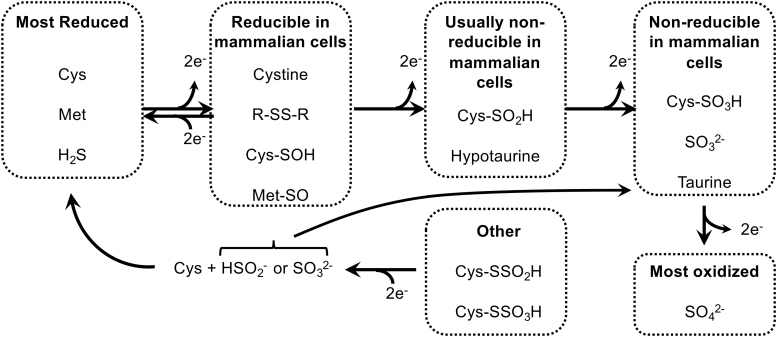FIG. 2.
Biological redox states and transitions of S. Most activities of S in mammalian cells transition between the most reduced state (far left) and a 2-electron oxidation of that state, fueled by the NADPH-dependent GSR and TRXR1 disulfide reductase systems. A further 2-electron oxidation yields sulfinic acids, which are not reducible in mammalian cells except in the special situation of sulfiredoxin-catalyzed repair. Further oxidation states cannot be reduced in mammalian cells, with the exception of persulfide-linked higher oxidation states. In the figure, “Cys” is used to refer to the free amino acid, Cys in the context of a protein or other Cys-containing molecule, or a Cys-derived S in the context of another metabolite. See text for more details. GSR, glutathione reductase; TRXR1, thioredoxin reductase-1.

